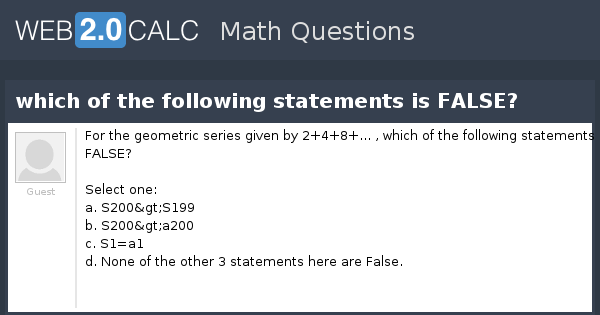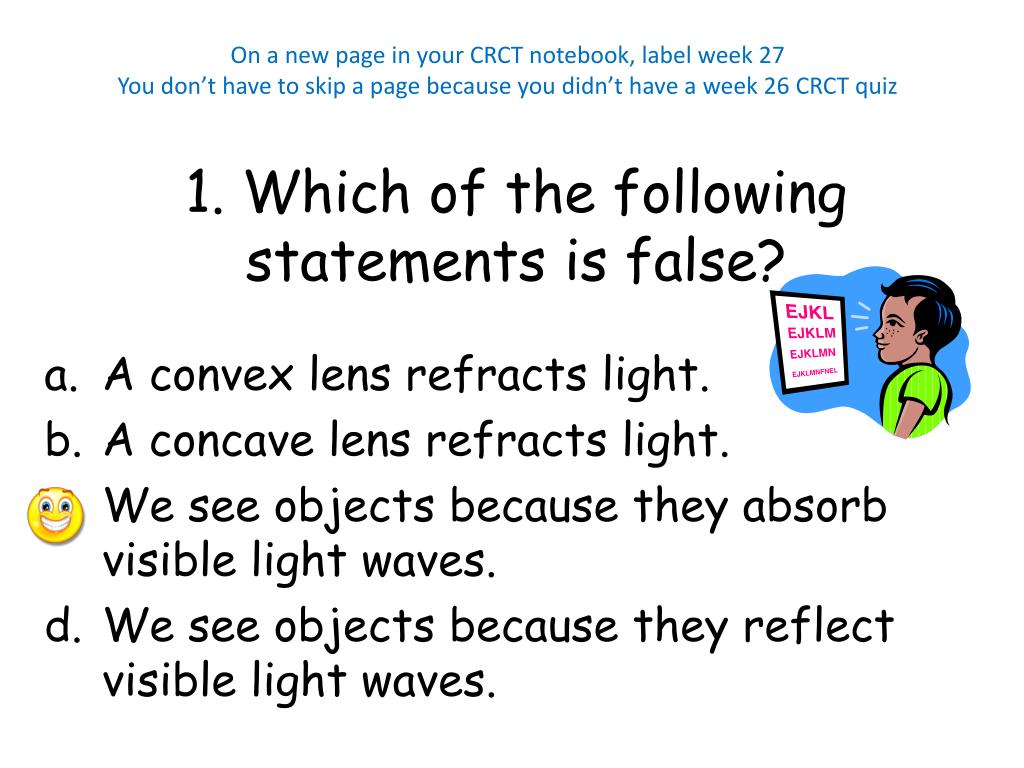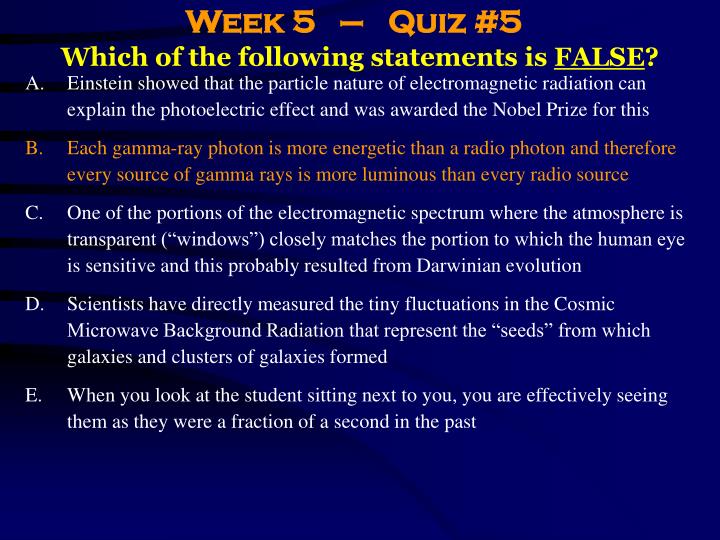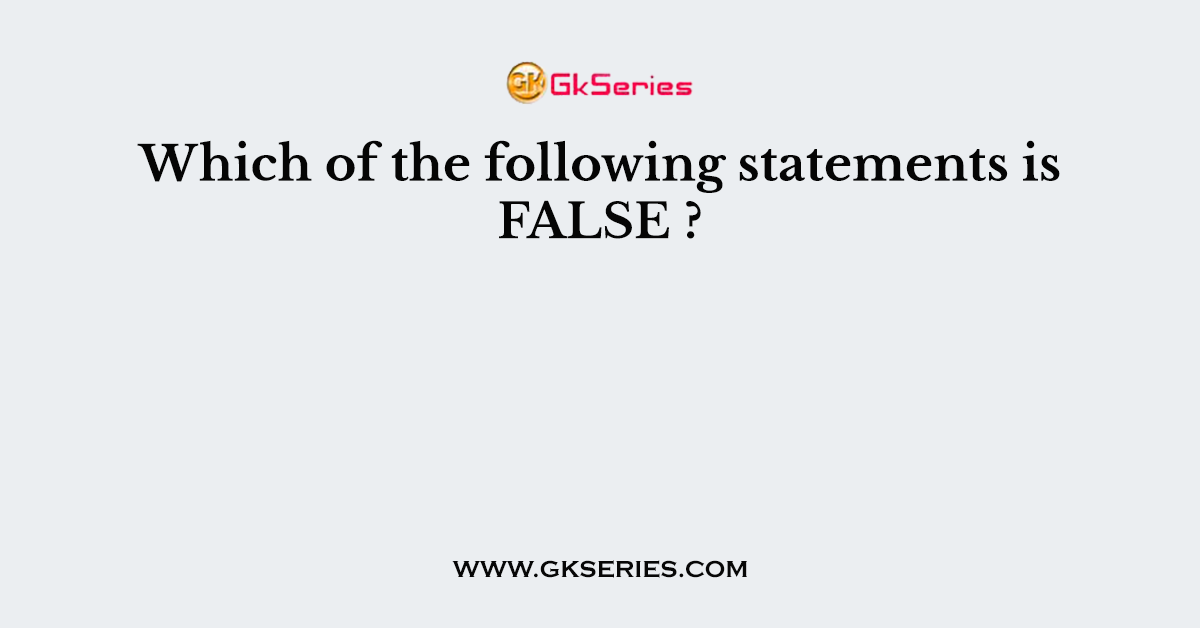Which Of The Following Statements Is False

The proliferation of misinformation and disinformation continues to plague modern society, eroding trust in institutions and distorting public understanding of critical issues. Identifying falsehoods amidst a sea of competing narratives has become an increasingly complex and urgent challenge, demanding heightened media literacy and critical thinking skills.
At the heart of this struggle lies the ability to discern fact from fiction, particularly when confronted with seemingly authoritative statements. This article delves into the multifaceted process of verifying information and examining the potential pitfalls of accepting claims at face value. It will explore the methodologies for evaluating claims, assessing source credibility, and ultimately, arriving at a more informed understanding of truth.
The Anatomy of a False Statement
A false statement, by definition, is a declaration or assertion that does not align with verifiable facts or empirical evidence. This discrepancy can stem from various sources, including unintentional errors, biased interpretations, or deliberate attempts to deceive.
Understanding the motivations behind false statements is crucial. Some errors occur due to simple mistakes, while others are fueled by ulterior motives such as political maneuvering or financial gain.
Intentional falsehoods, often referred to as disinformation, represent the most insidious form of misinformation. These are carefully crafted lies designed to manipulate public opinion or undermine opposing viewpoints.
Evaluating Claims: A Multifaceted Approach
Evaluating the veracity of a statement necessitates a multi-pronged approach. It requires moving beyond surface-level acceptance and engaging in critical analysis.
Fact-checking forms the cornerstone of this process. Independent fact-checking organizations rigorously examine claims made by public figures and media outlets, assessing their accuracy based on available evidence.
Cross-referencing information across multiple, reputable sources is also essential. If a single source presents a claim unsupported by others, it raises a red flag.
Consider the source's potential biases or affiliations. An organization funded by a specific political party, for example, may present information in a way that favors its agenda.
The Role of Credible Sources
Distinguishing between credible and unreliable sources is paramount in the search for truth. Reputable news organizations, academic institutions, and government agencies typically adhere to rigorous standards of accuracy and objectivity.
However, even established institutions are not immune to errors or biases. Examining their track record and editorial policies can provide valuable insights.
Be wary of websites or social media accounts that lack transparency regarding their ownership or funding. These sources are often used to disseminate propaganda or promote specific agendas.
Identifying Red Flags
Several warning signs can indicate that a statement is potentially false. These include emotional language, reliance on anecdotal evidence, and the absence of verifiable data.
Emotional appeals, such as fear-mongering or appeals to patriotism, often serve to distract from a lack of factual support. Anecdotal evidence, while compelling on a personal level, is not a substitute for statistical data or scientific studies.
The absence of citations or references is another cause for concern. Reputable sources typically provide links to the data or research that supports their claims.
The Impact of False Statements
The consequences of widespread false statements can be far-reaching. Misinformation can undermine public health efforts, incite violence, and erode trust in democratic institutions.
During the COVID-19 pandemic, for example, false claims about vaccines fueled vaccine hesitancy, hindering efforts to control the spread of the virus. Political disinformation can polarize society and make constructive dialogue more difficult.
The erosion of trust in institutions can lead to cynicism and apathy, making it more difficult to address complex societal challenges.
Moving Forward: Fostering Media Literacy
Combating the spread of false statements requires a collective effort. Educational institutions, media organizations, and individuals all have a role to play in promoting media literacy.
Schools should incorporate media literacy into their curriculum, teaching students how to evaluate sources, identify biases, and discern fact from fiction. Media organizations must uphold high standards of accuracy and transparency.
Individuals must develop critical thinking skills and be willing to challenge their own assumptions. By becoming more discerning consumers of information, we can help create a more informed and responsible society.
Ultimately, the fight against falsehoods is a continuous process. It requires constant vigilance, a commitment to truth, and a willingness to engage in critical inquiry.










![Which Of The Following Statements Is False [ANSWERED] Which of the following statements is false? A. Given - Kunduz](https://media.kunduz.com/media/sug-question/raw/53023683-1658452423.479124.jpeg?h=512)


